Natasha Sander. Interview with Thomas K. Shor
Interview with Thomas K. Shor
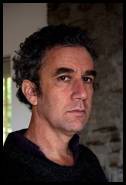
Natasha Sander: Please tell us about yourself.
Thomas Shor: I was born in USA, but have spent most of my life traveling in and writing about mountainous regions in other countries, from the Mayan Highlands in Chiapas in southern Mexico to a mountaintop monastery in Greece, and more recently in the Indian Himalayas.
Natasha: What draws you to mountains?
Thomas: I find flat land inherently boring. Maybe it is my prejudice, but how to differentiate one piece of flat land from another? But when you go to the mountains, each mountain and valley is different. Each has its own story. As a writer, I am interested in stories, and the wisdom they can impart. I’ve been interested in the stories of mountain people for a very long time.
Natasha: You have a book coming out entitled “A Step Away from Paradise: A Tibetan Lama's Extraordinary Journey to a Land of Immortality”, which tells the story of a “crazy” Tibetan lama named Tulshuk Lingpa who led over three hundred people into the high snow mountains of the Himalayas in order to find a hidden land of immortality. This happened in the early 1960s. It was that story that got me interested in you. Could you tell us how you first heard about Tulshuk Lingpa?
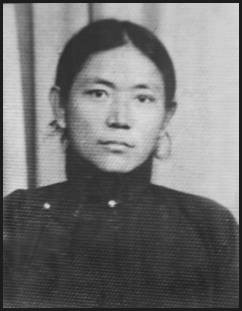
Thomas: I spent years living in the eastern Himalayas, in Darjeeling and Sikkim. One day I was visiting a Tibetan friend in Gangtok, the capital of Sikkim. His name is Tinley, and he is a master painter of tankas, the religious paintings of Tibet. I was sitting there watching him repair a painting for the Sikkimese royal family when he said, “You’re a writer—you like stories? My mother-in-law has a story you won’t believe. It will make you question your sense of reality.”
Of course I was eager to hear, and the next day I sat down with Tinley and his mother-in-law, a woman of seventy-five, and she told me a story so amazing that I must confess it crossed my mind that she could have been making the whole thing up! You see, when she was in her early thirties she had been a disciple of Tulshuk Lingpa. She had given away her home and all her possessions and followed Tulshuk Lingpa into the glaciers in order to find what she described as a magical land of immortality, expecting never to return.
When I realized her story was true, I knew immediately that I had to explore it. It wasn’t long before I realized this would be my next book. It felt like this story had fallen into my lap for a reason. Call it writer’s grace.
I spent the next years traveling across the Himalayas, tracking down Tulshuk Lingpa’s surviving disciples—an amazing group of people, all of whom had been willing to give up this world for one far greater—and piecing together what happened and just who this charismatic lama Tulshuk Lingpa was. I also conducted quite a bit of research into the tradition within Tibetan Buddhism of the hidden lands. This brought me in touch with many high lamas and some of the world’s top scholars of Tibetan Buddhism.
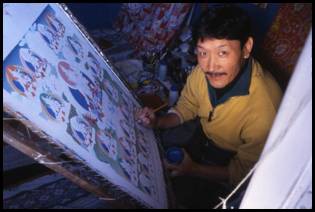
Natasha: What exactly touched you the most in the amazing biography of Tulshuk Lingpa?
Thomas: Tulshuk Lingpa was a visionary, and true visionaries are rare on this planet. They are able to bring down into form the great hopes and aspirations of us all. Think of a great musician or poet. They can capture in a few lines or notes the essence of what it means to be human. Everybody longs for wholeness. Why else do people search, be it for enlightenment or love. During the Tibetan’s most difficult period, the Chinese invasion of the 1950s when Tibetans were being slaughtered by the thousands and their ancient spiritual traditions were being smashed along with their monasteries, Tulshuk Lingpa set out for a better land, a prophesized place of wholeness and wonder where the ancient teachings would be preserved.
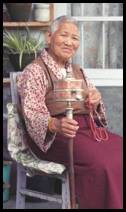
Natasha: Do you think this hidden land exists?
Thomas: I’ve asked myself this question many times. In the book I purposefully keep the question open. The book is neither about me nor my opinions. The British mystical poet William Blake once said, “If the sun had but a doubt, it would immediately go out. The closest I’ve ever come to an answer is this: If you believe without even a tiny bit of doubt that the Hidden Land exists, surely it will be there. That is the power of vision.”
Natasha: Do you know where Tulshuk Lingpa brought his disciples? Do you know where they went to find this hidden land?
Thomas: More or less, yes.
Natasha: Have you ever been tempted to try to go?
Thomas: I had the very good fortune of spending a lot of time with Tulshuk Lingpa’s only son, Kunsang. He is a wonderful storyteller himself, and very learned in Tibetan Buddhist dharma. I traveled with him to Sikkim to visit some of his father’s closest disciples. One was a lama who is also a great practitioner and yogi, famous for his ability to make rain. This yogi, who was in his late 80s at the time, said he had done the astrological calculations. He said the time was coming when it would be possible to go to the Hidden Land. He wanted Kunsang and me to accompany him. When I realized he was serious, I was honored. Yet I also knew it was impossible. He was too old for the difficult journey, and besides he wasn’t the prophesized lama to open the way.
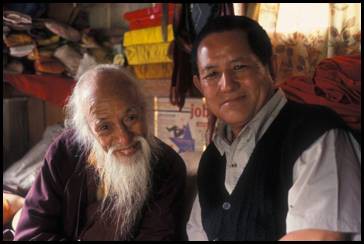
You see, it isn’t only a matter of getting to the right place. The Hidden Land is not found on any map. It does not exist within the framework of latitude and longitude. That’s why initially I called my book “A Crack of the World” (Publishing house decided to change the name). Yes, you have to get to the right place. But then you need the prophesized lama to ‘open’ the way. A crack has to form in the fabric of reality, and you must have the courage to step through it. And once you pass through, you can never return; you must be willing to give up everything and everybody you’ve ever known and loved in this world, forever. This would take an extraordinary act of faith. I’m not sure I’m ready.
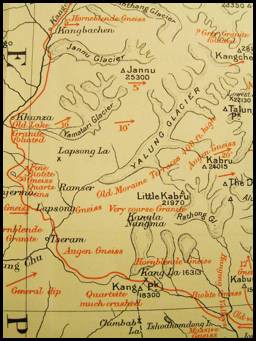
Natasha: When and where will your book be published?
Thomas: It will be published in hardcover by Penguin India in October, 2011. I am also in negotiations with a Russian publisher for a Russian translation. A Polish translation might just also be in the works as well.
Natasha: Is it true that you are planning to make a movie about this story?
Thomas: From the start, I’ve known this story would make a wonderful movie. While others have seen the potential as well and have discussed it with me, as yet there are no concrete plans. Let the book come out, then let’s see.
Natasha: Do you have the wish to write another (or maybe more then one) book about yogis’ life stories?
Thomas: Funny you should ask! I’m just completing another book about a spiritual master I spent a lot of time with in the Darjeeling/Sikkim area. It is called The Master Director. The story is different than the one about Tulshuk Lingpa, who died long before I heard about him. In this new book I describe what it is actually like to spend a prolonged time with a spiritual master.
Natasha: What tradition is he in?
Thomas: He is a Tibetan Buddhist Lama, but he is like no lama I’ve ever heard of. It seems he had his spiritual attainment from birth, before he was trained into any one religion. He has Hindu as well as Buddhist followers. His message is beyond any single religion. I think that is how true masters are. They are not contained by any tradition whatsoever. The living waters of the spirit are like that, like quicksilver. That’s why such masters are often considered crazy. They do not conform.
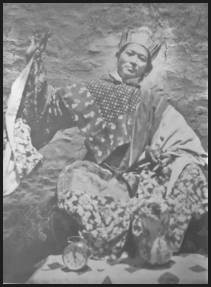
Natasha: Do you think Tulshuk Lingpa was also such a “crazy” lama?
Thomas: Would you follow a rational man through a crack in the fabric of reality? By definition he’d have to be what we call crazy. Even Tulshuk Lingpa’s name gives it away. A lingpa is a special type of Tibetan Lama who has the capacity to find terma, or hidden treasures. That explains his second name, Lingpa. Tulshuk means crazy. He was named this when he was eight years old. So he must have shown the signs even as a boy. Tulshuk also means changeable or mutable. So someone with a tulshuk nature will say one thing in the morning, another thing in the afternoon, and contradict both by evening. So if you translate his name, it is Crazy Treasure Revealer.
Natasha: Do you have some words of advice to your future readers?
Thomas: Tulshuk Lingpa wrote a neyik, or guidebook, to the Hidden Land. I was fortunate enough to have it presented to me by an old lama who was Tulshuk Lingpa’s close disciple, but under the condition that I publish only short quotes from it, and give away none of the scripture’s secrets. In it, Tulshuk Lingpa gives advice on many levels about finding the Hidden Land. Some of it has to do with the actual route, describing particular valleys of colored rocks, curtains of ice you must pass beneath, depositories of fantastic gems, as well as the local deities you must placate. These are written in such a cryptic language that one would have to be a tantric master just to follow.
But he gives other advice too, more universal. So I will leave my future readers, as you call them—those Russians with an interest in such matters—with a few lines from the Guidebook: “Don’t listen to anybody. Decide by yourself and practice madness. Develop courage for the benefit of all sentient beings. Then you will automatically be free from the knot of attachment. Then you will continually have the confidence of fearlessness and you can then try to open the Great Door of the Hidden Place.”
You can learn more about writer and photographer Thomas K. Shor and his book, "A Step Away from Paradise: A Tibetan Lama's Extraordinary Journey to a Land of Immortality" at: www.ThomasShor.com
Read Chapters from new book here









